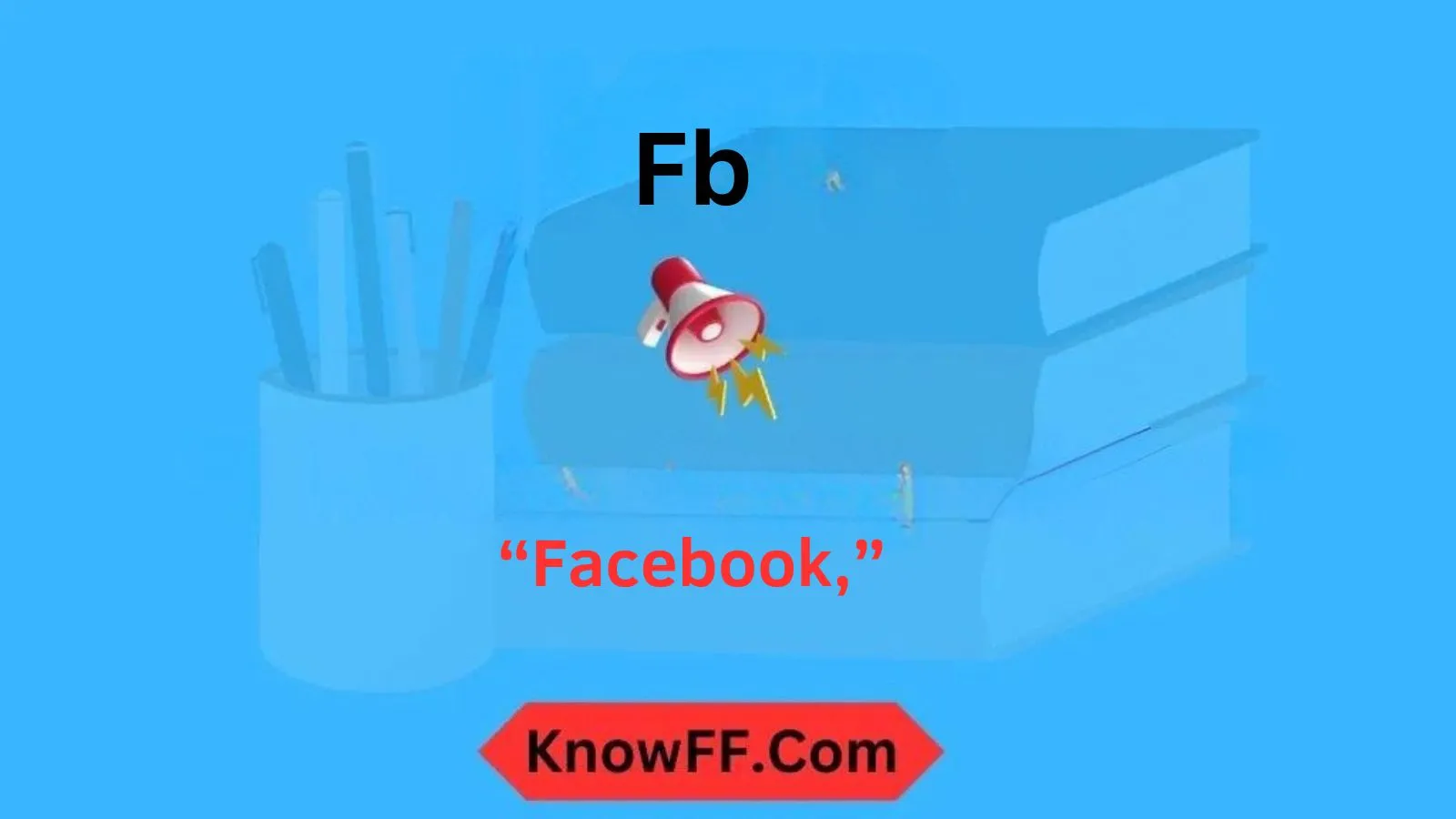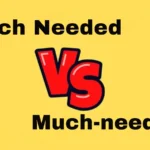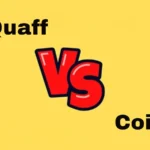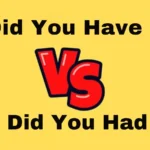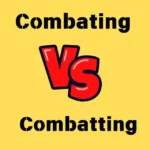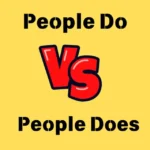In the fast-paced digital world, abbreviations have become a universal language. One such abbreviation that often pops up in messages and online conversations is “FB.” People frequently search for the meaning of FB in text because it appears across social media platforms, chat apps, and even in professional contexts.
Understanding this short term helps avoid confusion and makes communication smoother. Whether you see FB on WhatsApp, Instagram, or even in a scientific discussion, its meaning depends on the context.
By learning the various interpretations of FB, you can confidently navigate casual conversations, professional exchanges, and technical discussions.
This guide explains the meaning and definition of FB, its background, usage in multiple fields, and clears up common misconceptions. It will help you know when to use FB and how to respond appropriately, ensuring your communication stays relevant and effective.
Meaning & Definition
The term FB is most commonly recognized as an abbreviation for “Facebook,” the world-famous social media platform. However, FB’s meaning extends far beyond that. In digital communication, FB can also stand for “feedback,” “follow back,” or “fullback” depending on the situation.
In casual text messages, FB often refers to “follow back” on platforms like Instagram or TikTok. In professional or academic settings, it may signify “feedback,” especially in email exchanges or project discussions. Meanwhile, in sports, FB can mean “fullback,” a position in football or rugby.
Understanding the context is key to identifying the correct meaning. This versatility makes FB a dynamic abbreviation that seamlessly adapts to different communication styles.
Background
The abbreviation FB gained prominence with the rise of Facebook in the mid-2000s. As Facebook became one of the most widely used social media platforms, users began shortening it to FB for convenience in text conversations.
Over time, as texting culture evolved and social media diversified, people began assigning new meanings to the acronym. The popularity of abbreviations in online communication contributed to FB’s expansion into professional, sports, and technical fields.
Today, FB is not tied to a single meaning but represents a multifaceted linguistic trend shaped by digital communication and cultural changes.
Usage in Different Contexts
FB’s meaning shifts significantly depending on where and how it’s used. Understanding the context ensures you interpret it correctly.
In Chat & Messaging
In personal chats on WhatsApp, Messenger, or text messages, FB often means “follow back.” For instance, someone might write, “Hey, I just followed you—FB?” meaning they’re asking you to follow them in return.
On Social Media
On platforms like Instagram, TikTok, and Twitter, FB is a common term used to grow networks and engage with audiences. Influencers often encourage followers to “FB” to boost mutual growth.
In Professional Fields
In workplaces and academic settings, FB typically stands for “feedback.” For example, a manager might say, “I need your FB on this report by tomorrow.” Here, FB clearly refers to constructive input or comments.
Meaning in Chat, WhatsApp, Instagram, and TikTok
On chat apps like WhatsApp and Messenger, FB is widely understood as “follow back.” People use it to request reciprocal engagement on social media platforms.
On Instagram and TikTok, FB has become part of influencer culture. Many use it in hashtags like #FB or captions to encourage audience interaction.
In casual conversations, especially among younger users, FB might also be used playfully to refer to Facebook itself. For example, “Check it on my FB story.”
Meaning in Physics, Medical, and Aircraft Terminology
Outside the realm of social media, FB has distinct meanings in specialized fields:
- Physics: FB can refer to “feedback” systems, often used in control engineering or signal processing.
- Medical Field: Doctors sometimes use FB to mean “foreign body,” referring to an object inside the body that doesn’t belong there.
- Aircraft & Aviation: In aviation terminology, FB might stand for “fuselage bulkhead,” a critical structural component of an aircraft.
These examples highlight why understanding the context is crucial when interpreting FB in technical discussions.
Common Misconceptions
A common misconception is that FB always refers to Facebook. While that was true during the early days of social media, today the term has diverse meanings.
Another frequent misunderstanding is assuming FB in professional communication refers to social media. In workplace emails, FB often means feedback rather than the platform.
Misinterpretations like these can lead to confusion, making it essential to pay attention to the context of the conversation.
Similar Terms & Alternatives
Several abbreviations are often used alongside or instead of FB, including:
- IG (Instagram)
- YT (YouTube)
- DM (Direct Message)
- F4F (Follow for Follow)
- REV (Review) as an alternative for feedback in professional contexts
Knowing these alternatives helps you understand the language of modern communication and avoid mixing up terms.
How to Respond to It
Responding to FB depends on its intended meaning:
- If FB means “follow back,” you can simply follow the person or reply with a thumbs-up emoji.
- If FB refers to “feedback,” respond by sharing your thoughts, opinions, or suggestions.
- In a technical or medical context, it’s best to seek clarification before responding to ensure accuracy.
Clear and timely responses foster better communication and help avoid misunderstandings.
Differences from Similar Words
FB differs from similar abbreviations because of its versatility. Unlike IG or DM, which have fixed meanings, FB adapts to the conversation’s context.
For example, while “F4F” is exclusively related to social media engagement, FB can be used in both professional and casual settings, making it one of the most context-driven abbreviations in modern communication.
Relevance in Online Conversations & Dating Apps
In online conversations and especially on dating apps, FB often pops up as a request for “follow back.” Users may exchange social media handles and use FB to encourage mutual connection.
Understanding this usage is crucial for maintaining smooth communication in digital interactions, where first impressions often rely on clear and concise messaging.
FAQs
What does FB mean in texting?
FB in texting usually means “follow back” or sometimes refers to Facebook, depending on the conversation.
Is FB slang or formal?
FB is mostly slang and is not generally used in formal writing unless it refers to feedback in a work context.
Can FB mean feedback in email?
Yes. In professional emails, FB commonly stands for “feedback.”
How do I know if FB means follow back or Facebook?
The context of the conversation will make it clear—social media chats usually imply “follow back,” while casual mentions often mean “Facebook.”
Does FB mean something in medicine?
Yes, in the medical field, FB can stand for “foreign body.”
Is FB used on dating apps?
Yes, FB often appears on dating apps as a request to “follow back” on social media.
Conclusion
The abbreviation FB is more than just shorthand for Facebook. Its versatility allows it to thrive in different contexts—from casual chats and social media interactions to professional discussions and technical fields. Understanding its meaning helps avoid miscommunication and fosters clearer digital exchanges.
As language continues to evolve with technology, FB remains an excellent example of how abbreviations adapt to meet the needs of fast, efficient communication.
